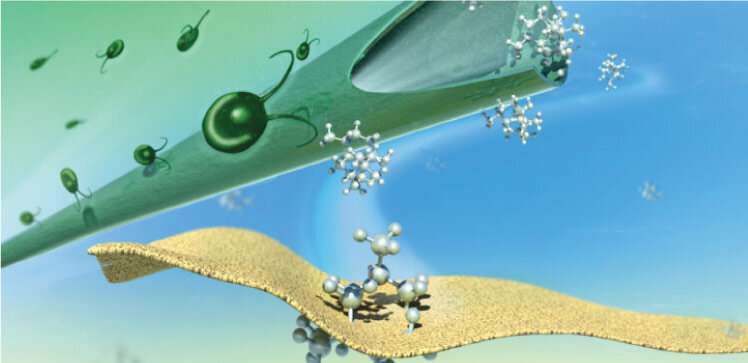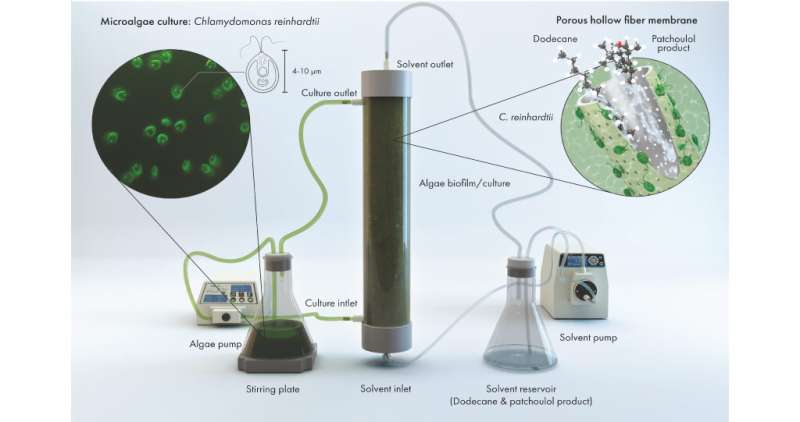Milking molecules from microbes

A sustainable chemical separation method that uses membranes, microalgae and artificial intelligence has been developed by a team drawn from different KAUST groups whose members have diverse specialties in bioengineering, membranes and water reuse and recycling.
Such membrane-based continuous separation and concentration processes will help realize the full potential of microbial chemical production for use in medicine and industry.
"The advantage of our method is that products can be continuously extracted from liquid microbial cultures, such as microalgae, in a process known as 'milking,' rather than being extracted laboriously from the biomass at the end of a batch culture," says postdoc and first author Sebastian Overmans.
Microalgae are single-celled photosynthetic microbes that naturally produce many useful chemicals. They can also be genetically engineered to excrete other specialty molecules. Algae are increasingly being harnessed as sustainable and environmentally friendly bio-factories, but separating the precious molecules is challenging.
This project demonstrated a low-energy and efficient way to harvest and concentrate these products. This process is more sustainable than other separation processes because it is low energy, the microbes can be grown on waste materials and the molecular concentration process does not produce waste.
The system is based on a membrane built from hollow microfibers that separates the culture fluid that contains microalgae from a solvent where the desired product accumulates. The product is then further separated and concentrated using other specialized membranes selected and designed by artificial intelligence that allow recycling of the solvent without loss to the system.

The team demonstrated the potential of their technique by continuously extracting patchoulol, a compound widely used in perfumery. These membrane combinations could also be applied to many other specialty chemicals.
"The development of the extraction process was completely new territory," says Overmans.
"This is exciting," suggests biotechnologist Kyle J. Lauersen, "because it could be implemented in large scale bio-factories using a variety of microbes, not only algae, to convert waste into valuable products."
Chemical engineer Gyorgy Szekely adds that the researchers used the artificial intelligence tools and machine learning capabilities available at KAUST to guide the development and refinement of the membrane process.
The next step is to demonstrate scaling up to industrial levels. The team also plans to develop membranes with larger surface areas and to explore the use of different algal strains to produce many more compounds of interest.
The research was published in Green Chemistry.
More information: Sebastian Overmans et al, Continuous extraction and concentration of secreted metabolites from engineered microbes using membrane technology, Green Chemistry (2022). DOI: 10.1039/D2GC00938B
Journal information: Green Chemistry





















